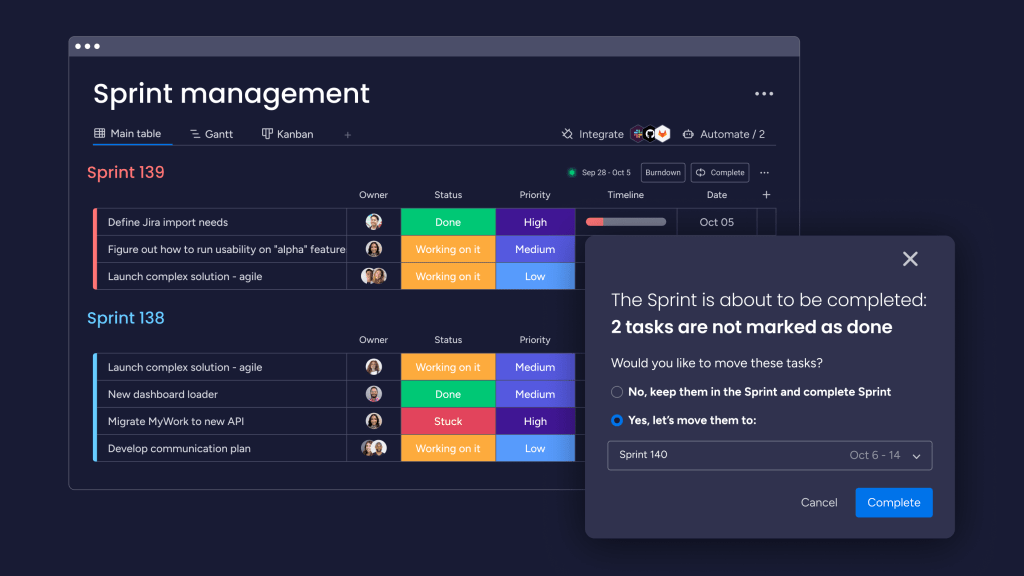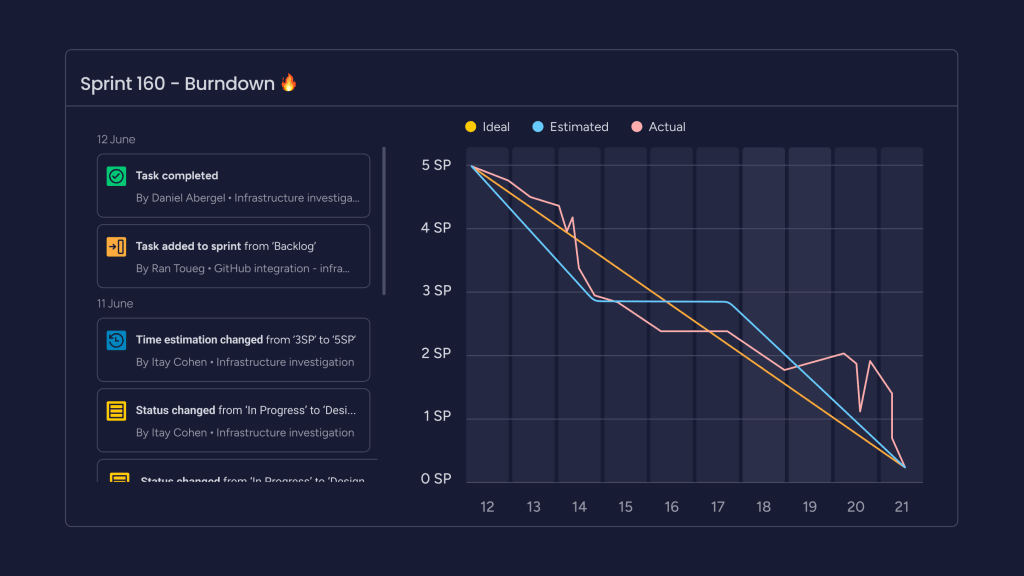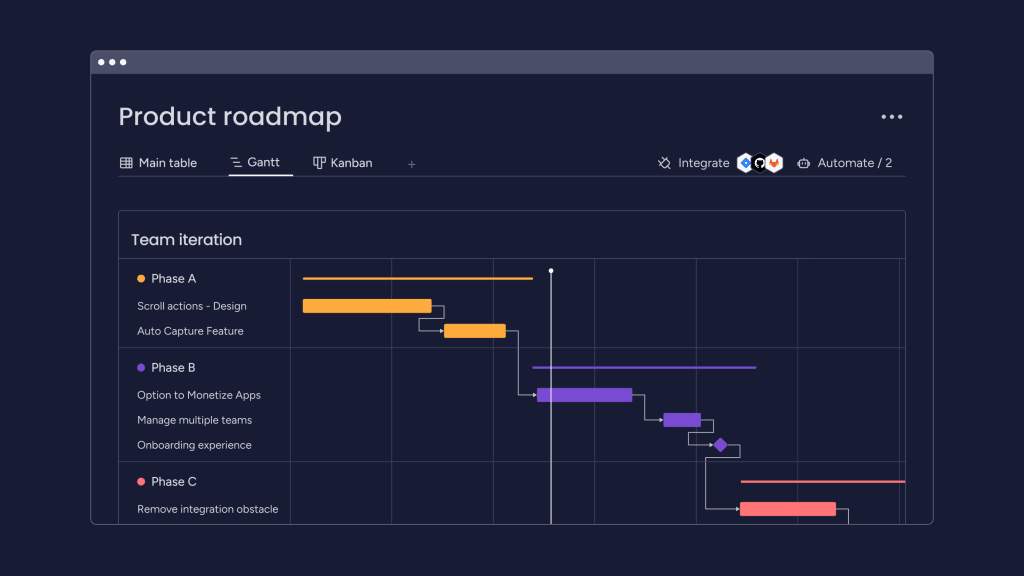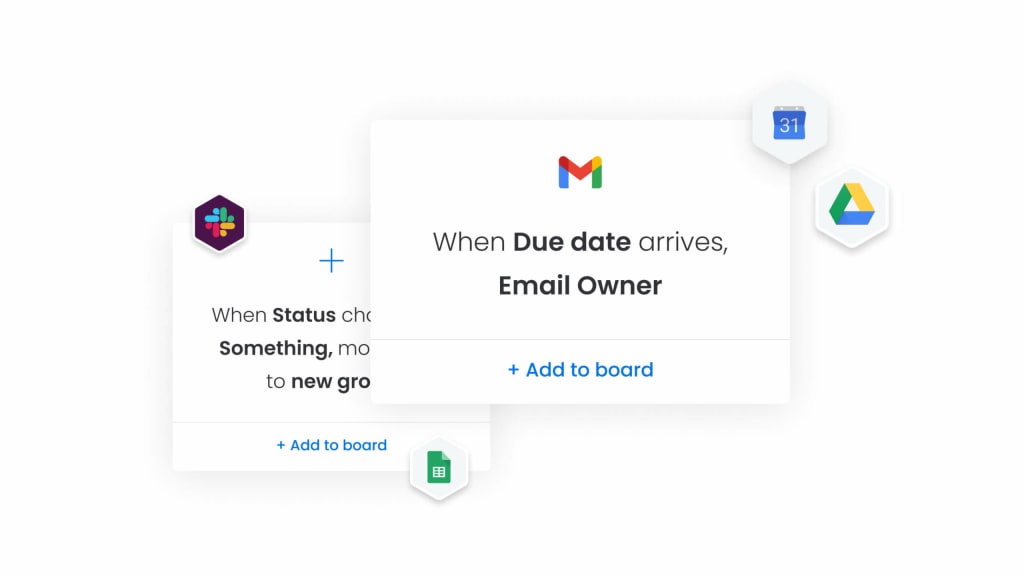Agile and Waterfall are two popular project management styles that use radically different methods to reach a successful project outcome. Agile is lean and flexible with enough ambiguity to make changes to a project no matter how far along you are. Waterfall is crisp and structured, defining each step from start to finish.
Which is the best choice? Of course, it depends. Choosing between Waterfall vs. Agile boils down to your specific team and your project. Let’s walk through the details of each methodology and explore how to use them in monday dev.
What is Agile methodology?
The Agile methodology is a collaborative project management methodology that breaks down larger projects into smaller tasks for teams to tackle collaboratively. Based on the 12 principles of the Agile manifesto, this methodology values flexibility and cross-team collaboration, releasing teams from the step-by-step structure of linear methods to adapt a project as it progresses.
Agile project management works in iterations or sprints. Each iteration is a small deliverable with a short deadline (usually 1-3 weeks) that a team focuses on and completes before receiving feedback on it. The team takes these valuable insights and rapidly adapts the project as it works through each sprint.
Agile example
Imagine a software development team needs to create a productivity tool for a small business. In Agile, the process would include:
- Project kickoff: The project manager creates a high-level vision of the tool’s key features without detailed requirements.
- Iterative development: Based on priority and feedback, each team works on a feature from the product backlog. They work in short sprints throughout the project timeline to develop a working increment of the product.
- Continuous testing and feedback: Testing is integrated into each sprint to identify errors immediately. At the end of each sprint, the increment is presented to stakeholders to guide the following sprint.
- Deployment: A minimum viable product of the productivity tool is released.
- Ongoing development and maintenance: The project team continues adding features, fixing bugs, and improving subsequent sprints based on user feedback and business needs.
What is the Waterfall method?
The Waterfall method has been around since 1970 when Dr. Winston Royce detailed it as a solution for large software development projects. This linear concept is based on the idea that projects are made up of steps that follow one after the other. When you put all your project steps in order, they cascade down like a waterfall (hence the name).
Waterfall example
Imagine the same software development team uses Waterfall to design its productivity tool. The process would include:
- Requirements gathering: The project manager creates a clearly defined scope based on all the features the tool needs.
- Product design: Detailed design documentation guides the development.
- Implementation: Coders follow a sequential process based on the modules laid out in the design phase.
- Testing: The system is thoroughly tested for bugs, performance issues, and alignment with the initial requirements.
- Deployment: After fixing any bugs, the tool is rolled out for customers.
- Maintenance: The project team addresses any issues that arise post-deployment.
What is the difference between Waterfall and Agile?
While both project management methodologies share the same goal—to deliver a successful project outcome—they have strikingly different approaches. Developed 30+ years apart, here are the key differences between Waterfall and Agile:
Waterfall approach vs. Agile
The Waterfall method is linear, following a sequence of development phases, each of which must be completed before the next begins. It’s a rigid, structured approach with little room for changes once a phase has been initiated.
In contrast, Agile methodology thrives on its iterative approach, using each sprint to deliver a small, usable project segment. This flexible approach encourages rapid adaptations.
Waterfall emphasis vs. Agile
The Waterfall methodology is all about sticking to the plan. Each phase of the project is meticulously documented, and everyone is encouraged to understand their role and requirements before the project begins.
Agile is chattier and more fluid—it relies on continuous feedback and active participation from all stakeholders to shape the project’s direction. This feedback makes it easy to incorporate changes even late in the project cycle.
Agile delivery vs. Waterfall
Agile is focused on delivering working software quickly, using rapid, incremental releases. In Agile, a functional version of the product is always available, albeit with varying degrees of completion throughout the project lifecycle.
Waterfall is undoubtedly a slower and more methodical approach. Although stakeholders don’t expect to receive a fully functional product until the end of the project, they’ll have a clear picture of how the project’s timeline is progressing at key milestones.
Agile vs. Waterfall requirements
Agile is versatile—there’s no need to know 100% of the project requirements upfront. Using an adaptable framework, Agile allows you to adapt on the fly, even in the middle of a project.
Waterfall is the opposite of Agile—it sets requirements in stone at the start of the project, making any subsequent changes challenging and potentially costly.
Customer involvement in Agile vs. Waterfall
Agile actively involves the customer or product owner throughout the entire development process. If you’re using this method, you must be comfortable showcasing your products at various stages of development, even if they look a little scrappy. The payoff is developing something that enhances customer satisfaction and achieves project success by ensuring the final product meets their needs.
Waterfall is more about the ta-da moment, where you reveal your completed product to your customers and hope it elicits the desired response. Customer involvement is limited to the initial stages of the project, and you won’t receive any feedback from your audience again until you’re ready to test or deploy the product.
Agile vs. Waterfall methodology pros and cons
Still trying to decide between Waterfall or Agile? The table below gives a clear comparison of the pros and cons of each:
| Methodology | Agile | Waterfall |
|---|---|---|
| Pros | Flexible and adaptable to changes Emphasizes customer involvement and feedback Frequent delivery of product increments allows for early detection of issues Enhances product quality through continuous testing and refinement Encourages collaboration and communication among team members and stakeholders | Predictable schedule and budget Clear documentation and requirements make project scope easier to understand Well-defined stages make it easier to manage and plan Suited for projects with fixed requirements with minimal changes Ideal for projects where quality control is centralized and documentation is prioritized |
| Cons | Less predictable budget and timeline due to the flexible and adaptive nature Requires high level of customer involvement, which can be challenging if stakeholders are not readily available Can be less efficient in terms of resource utilization if not well-managed May produce excessive documentation if requirements and solutions evolve frequently Risk of scope creep without careful backlog management and prioritization | Inflexible to changes once the project has begun, thus costly or difficult to incorporate late adjustments Risk of delivering a product that no longer meets user needs or market conditions by the time it's completed Sequential phases can lead to delays if one phase extends beyond its planned duration Can lead to significant waste if the project is canceled or radically changed late in the process Less opportunity for iterative refinement based on user feedback, which can impact the final product's relevance |
When to use Agile vs. Waterfall
When it’s time to lay the foundation of a successful project, pit the two methodologies head-to-head and decide whether to use Agile or Waterfall.
Agile is best suited for projects where end-user requirements may evolve, hit roadblocks, or are not fully understood from the outset. Agile is naturally iterative, adjusting based on feedback from customers and stakeholders throughout the project. It requires a team of self-starters who collaborate and adapt without missing a beat.
Waterfall is best suited for projects with a clear and complete scope before the project starts. If you know every step a project will have to go through to complete it and see the risk of scope change is low, Waterfall becomes an incredibly efficient way to see a project through to the finish line. It requires a team where each member understands their role and meets all requirements before moving on to the next stage of development.
Plan your Agile sprints with monday dev
monday dev is a flexible platform built for Product and R&D teams to manage every aspect of product development from strategy to post-launch. Sitting on top of the robust monday.com Work OS foundation, monday dev is packed full of customizable features that are designed to take your Agile team to the next level and achieve excellence in each and every project. The following will ensure you plan, execute, and collaborate to deliver better products faster:
- Sprint management: Gain an immediate overview of your Agile sprints in monday dev, by assigning ownership, status, priority, and timelines to each.

- Burndown charts: Identify any potential bottlenecks by comparing your remaining effort with your ideal sprint progress.

- Kanban boards: Set up your monday dev boards with this customizable dashboard view. You’ll maximize efficiency by gaining full transparency into your team’s ongoing development tasks.

- Integrations: monday dev integrates with 72+ different tools, including essentials like GitHub and GitLab to automatically sync bugs and share updates with client-facing teams.

Create streamlined Waterfall projects with monday dev
Prefer a more traditional approach to project management? It’s equally easy to manage the entire lifecycle of your products in monday dev using the features of the Waterfall approach:
- Roadmap planning: monday dev lets you plot out your entire project from start to finish, using 25+ widgets and 36+ columns to display the perfect mix of quarterly plans, team progress, budgets, and more.

- Docs for knowledge management: Collate the detailed Waterfall documentation you need and store it in a single location.

- Automation: Keep your Waterfall cascading by setting up notifications alerting team members to begin their project stage when the previous stage is complete.

- Gantt charts: Visualize crucial project milestones and task dependencies to ensure your Waterfall projects run smoothly and adhere to the set timeline.
Pick the best methodology for your project
The success of your project hinges on using the right project management methodology. Whether you plump for Agile or Waterfall, monday dev offers an unparalleled workspace to manage your project workflows.
With its versatile and integrated tools, monday dev’s adaptability to both methodologies ensures your teams can manage their projects in a way that best suits their needs, benefiting from Agile’s flexibility and iterative feedback or Waterfall’s structured and sequential approach.
Ready to try monday dev out for size? Take a free trial today.

